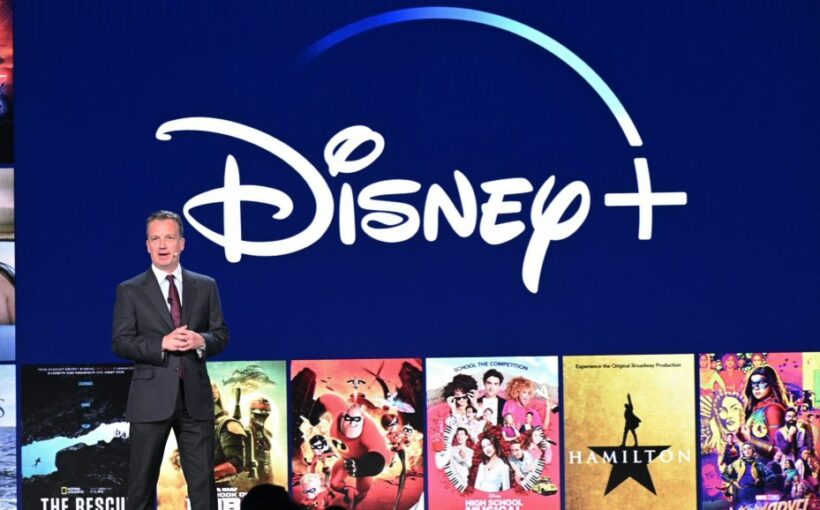Rita Ferro, president of ad sales for Disney, said the forthcoming ad-supported tier of Disney+ will have a less “robust” amount of ads compared with Hulu. That disparity, at least initially, will mainly be because about 65% of viewing on the streaming service is for movies, which don’t lend themselves to commercial interruption.
“Movies are the reason people come to the platform, and movies have a different ad load,” she explained. The family-friendly nature of Disney+ will also limit the scope to “four-quadrant” advertisers. Disney last evening hosted its upfronts pitch to advertisers and aside from a brief tease from CEO Bob Chapek at the outset, there were no specifics offered about the ad tier. Consumer pricing, timing and other details are still TBD.
Speaking alongside Disney CFO Christine McCarthy at a conference hosted by Wall Street research firm MoffettNathanson, Ferro said the plan is to “start slow” with 15- and 30-second spots before adding the full suite of ad options on Disney+. Since the announcement earlier this year about the ad-supported option, she said, “I can’t even tell you the demand we’ve had for this. … The response has been extraordinary.”
In the wide-ranging session, which elicited some notable commentary on theme parks and movie theaters from McCarthy, Ferro was asked by moderator Michael Nathanson about her reaction to new players coming to the AVOD game after starting as pure subscription. HBO Max just introduced an ad-supported version last year and Netflix has said it will do likewise (in an industry shocker that is still resonating) over the next year or so.
Asked about the new crop, Ferro said, “I am excited about every platform that wants to come to the space, it’s not easy.”
Addressing the disparity in financial terms, Ferro said the number of ads, should it remain below Hulu’s level, will not be a limiting factor. “More demand raises price,” she said. Advertisers have complained in recent years when linear ratings are off 25% but the going rate for ads rises by 30%. “Supply and demand,” Ferro said.
A good portion of the conversation centered on the many steps it took for Disney to be in a position to fully attack the ad-supported streaming business. How easy has it been? “Not easy,” Ferro replied. “We have been preparing for this moment for years.” A series of acquisitions and strategic moves — notably purchases of most of 21st Century Fox and BamTech as well as investments in ad technology — led to this point.
“I love our hand,” Ferro said. “We have 14 years of Hulu experience, decades of experience across the company. We have relationships in the market … people trust us.”
McCarthy was asked about the expectations for how many subscribers will take Disney+ with ads, as opposed to the ad-free version. “That will probably be about the same percentage for Disney+ and Hulu, based on the experience curve that we’ve witnessed.” Hulu has generally tilted toward the cheaper, ad-supported version, as is the case for Paramount+, Discovery+ and other dual-model options.
The Hulu experience is a key reason for Ferro and McCarthy feeling optimistic about the influx of new revenue on Disney+. Since the company took full operational control of Hulu in 2019, its revenue has doubled, Ferro said. Programmatic advertising revenue (an emerging form of ad sales in which ads are served through a computer-automated process) has risen fivefold.
Nathanson asked McCarthy about why Disney is shifting toward general entertainment on Disney+, departing from the initial laser-focus on the five main pillars of Marvel, Pixar, Star Wars, National Geographic and Disney-branded programming. Nathanson and some other Wall Street analysts have expressed concern about the decision putting the company in a more complex expense environment. In pursuit of more general subscribers, it could decide to spend heavily on a less brand-dependent title without the ability to rely on tried-and-true marketing and branding methods. In other words, it could be seen as an expensive roll of the dice relative to the launch strategy of leaning on a roster of blockbuster brands.
“The one thing we hear from subscribers, especially the ones who churn out,” McCarthy said, is that “they’re looking for more general entertainment.”
Figuring out how to make the proper match of content within the Disney ecosystem is an evolving process, especially given the inherent sensitivities on a platform with a lot of children streaming.
“I wouldn’t have my 8-year-old watch Dopesick or Pam & Tommy,” McCarthy said, alluding to two edgy Hulu titles. But given that about half of Disney+ subscribers do not have kids, she continued, “we look at this as being additive, not that we want to be in a race that we can’t win.”
McCarthy also addressed theatrical moviegoing, which has been a source of great speculation given Disney’s success and control of half of the U.S. box office. Even coming off a breakthrough with Dr. Strange 2, Chapek didn’t signal any shift in the company’s case-by-case stance on evaluating release patterns.
“All movies are not created equal, the audiences are not created equal,” she said. “Those people who are choosing to go to theaters, they go for specific product. Movies that have done best are action, superhero and what I would call adventure.”
For certain films, she said, “it’s great to utilize theaters” because moviegoers can “hoot and howl and high-five each other.” At the same time, The Mandalorian proves that, in the exec’s view, “we can create franchises on Disney+.”
Must Read Stories
Zaslav Eyes Fifth Broadcast Net; Chris Wallace Show Set At CNN
Fall Sked Set, ‘Todd’ On Thursday, Reality Wednesday, ‘Fire Country’ On Friday
Julianne Moore-Sandra Oh Pic, Jamie Foxx Actioner, ‘Maverick’, Reviews, Deals & More
Wolf & Littlefield Remember The Night The Crossover Event Was Born
Read More About:
Source: Read Full Article




